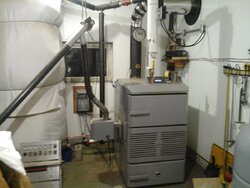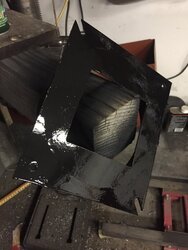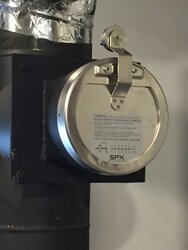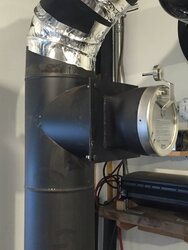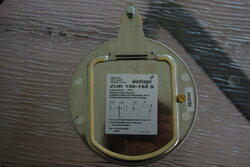TCaldwell
Minister of Fire
Sounds like what heaterman has suggested as well, loop supplying the whole house, panel rads with trv's in each room. My methods are behind the times but work well. I too don't charge the garn past 180-185degf, I have 7 zones ranging from infloor radiant, high output baseboard and regular baseboard. All zones except dwh use grundfos alphas, each zone has been balanced from 1 to 1.5gpm, allowing for long on times.The primary loop circ from the garn to the injection loop shared by the oil boiler delivers 6 gpm. Because i have not seperated dwh, my low water temp for wood changes to the oil boiler at 135degf. I might work on this someday but am slowly trying to integrate more infloor heat. What is different in theory is that the garn holds approx 1900 gal in storage, one supply one return, this is moved between the garn and the fphx with a grundfos 15-58 on low speed. This causes the stratification to happen in a non uniform manner, front to back as well, making it difficult to actually know much charge is left in the battery. By running a seperate tank mix loop whenever the draft inducer is on and or when there is a call for heat at approx 15gpm the tank stays within a few degrees top to bottom, so you know where your at all the time and when you need to fire again. The old 15-58s on the zones would pull 2.5 to 7 gpm per zone, and the primary loop circ at 13gpm, the system runs much smoother now.


 .
. !
!